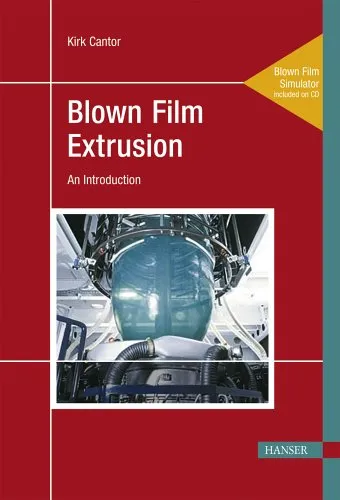ACS Biomaterials Science & Engineering
4.7
Reviews from our users

You Can Ask your questions from this book's AI after Login
Each download or ask from book AI costs 2 points. To earn more free points, please visit the Points Guide Page and complete some valuable actions.Related Refrences:
ACS Biomaterials Science & Engineeringpp.800—818 is a scholarly work authored by Kankala, Ranjith Kumar; Zhu, Kai; Sun, Xiao-Ning; Liu, Chen-Guang; Wang, Shi-Bin; and Chen, Ai-Zheng. This book delves deep into the fascinating world of biomaterials, offering profound insights into the design, synthesis, and application of advanced materials in biomedical engineering. As part of the ACS Biomaterials Science & Engineering series, the content found between pages 800 to 818 provides an invaluable contribution to both researchers and professionals who seek to advance healthcare technologies through innovative material science.
Detailed Summary of the Book
In these pages, the authors systematically explore the interplay between material properties and biological systems. The text presents a comprehensive assessment of functional biomaterials, including polymeric scaffolds, nanostructured surfaces, and hybrid composites. The narrative highlights recent developments in stimuli-responsive materials that can adapt to changes in temperature, pH, or biochemical signals, thus enabling precise therapeutic interventions.
Advanced biomedical applications discussed range from targeted drug delivery and regenerative medicine to biosensing and tissue engineering. The authors emphasize both the theoretical foundations and the practical considerations of integrating biomaterials into living systems. Ethical implications, scalability of production processes, and long-term biocompatibility are critically evaluated, ensuring that the discussion maintains relevance to modern research needs.
Materials engineering concepts are explained with clarity, covering the structural features that contribute to biofunctionality, degradation patterns, and mechanical properties necessary for particular medical applications. Coupled with case studies and experimental outcomes, readers are guided through how interdisciplinary collaboration in chemistry, biology, and engineering fosters breakthrough innovations that directly impact patient care.
Key Takeaways
- Biomaterials must balance biocompatibility, mechanical integrity, and tailored functionality for specific biomedical applications.
- Stimuli-responsive materials are the future of smart biomedical devices, enabling controlled interaction with biological environments.
- Nanotechnology plays a pivotal role in enhancing the performance of scaffolds and drug delivery systems.
- Ethical, regulatory, and scalability considerations are integral to the successful translation of biomaterial research into clinical practice.
- Interdisciplinary collaboration accelerates innovation and improves the potential for discovery in biomaterials science.
Famous Quotes from the Book
"The convergence of material science and biology offers unparalleled opportunities to redefine the boundaries of healthcare."
"Biomaterials are not merely passive implants; they are dynamic participants in the biological dialogue."
"Innovation in biomaterials depends not only on chemistry and engineering, but also on an acute understanding of the physiological environment."
Why This Book Matters
The work presented in ACS Biomaterials Science & Engineeringpp.800—818 is more than a technical account—it is a vision for the future of medicine driven by material innovation. As healthcare systems face increasingly complex challenges, from chronic disease management to personalized therapies, the role of biomaterials becomes crucial in delivering effective and sustainable solutions.
For researchers, the depth of analysis provides a roadmap for designing next-generation biomaterials that can meet stringent clinical demands. For engineers, it offers practical insights into optimizing mechanical and physicochemical properties without compromising biological integration. For policymakers and industry leaders, the discussions open important dialogues about ethical standards, manufacturing scalability, and global accessibility to advanced medical technologies.
This book section serves as an educational foundation, a reference for ongoing research, and a catalyst for innovation. With a focus on bridging scientific theory and clinical realities, the authors succeed in illustrating the transformative potential of biomaterials in enhancing patient outcomes and reshaping medical practice.
In summary, ACS Biomaterials Science & Engineeringpp.800—818 is an essential reading for anyone seeking to understand or contribute to the evolving landscape of biomedical materials. Through a blend of deep scientific knowledge and forward-thinking vision, it stands as a guiding beacon for the next wave of biomaterial advancements.
Free Direct Download
You Can Download this book after Login
Accessing books through legal platforms and public libraries not only supports the rights of authors and publishers but also contributes to the sustainability of reading culture. Before downloading, please take a moment to consider these options.
Find this book on other platforms:
WorldCat helps you find books in libraries worldwide.
See ratings, reviews, and discussions on Goodreads.
Find and buy rare or used books on AbeBooks.
1048
بازدید4.7
امتیاز0
نظر98%
رضایتReviews:
4.7
Based on 0 users review
Questions & Answers
Ask questions about this book or help others by answering
No questions yet. Be the first to ask!





